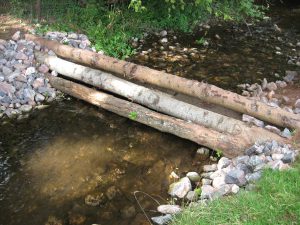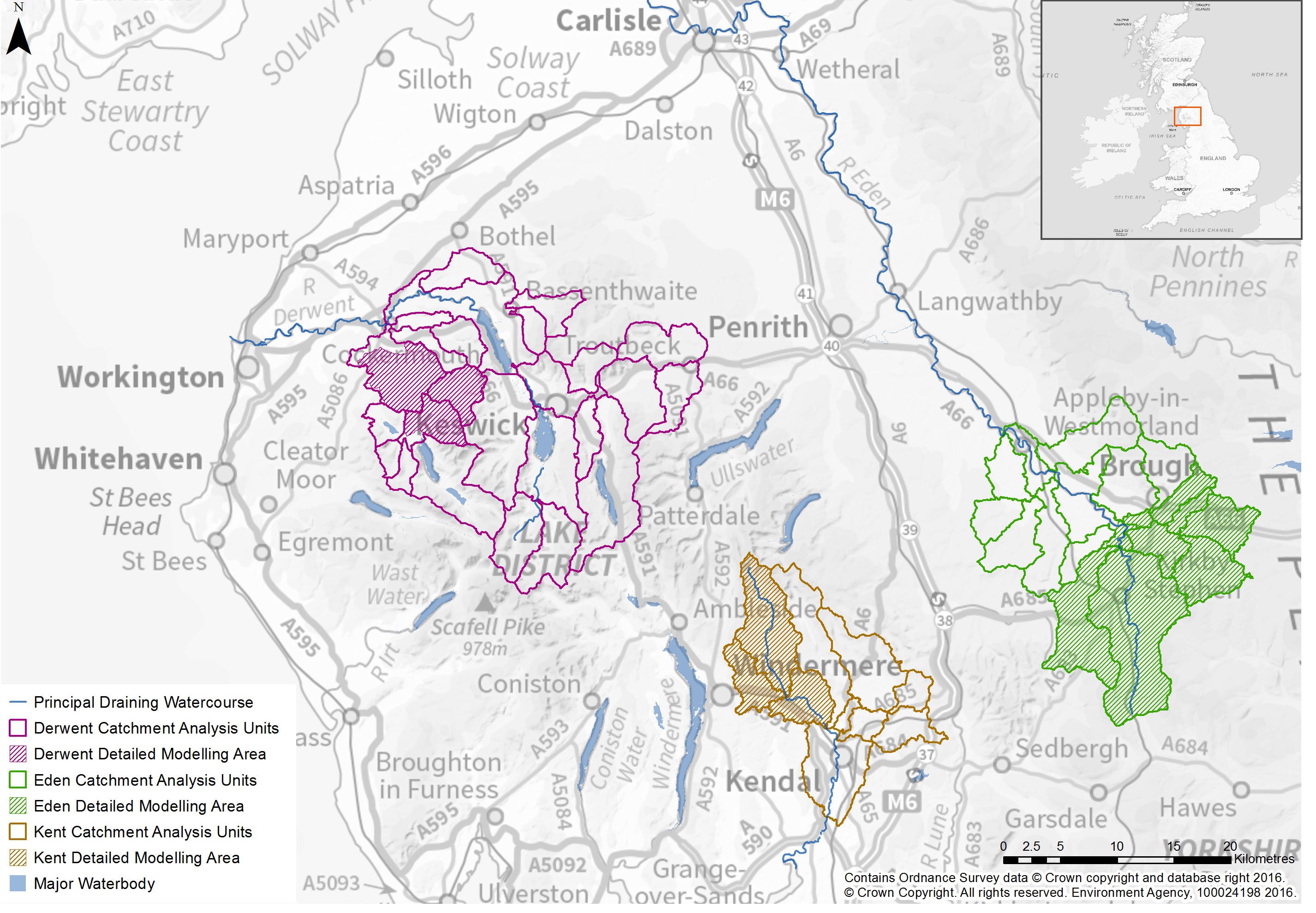Keith Beven FRS discusses recent developments in natural flood risk management

Our Trustee Keith Beven FRS is giving the President’s Address at the British Hydrological Society National Symposium on Wednesday 12 September, 2018.
Here, Professor Beven discusses recent developments in flood risk management.
Reviewing the evidence for the effectiveness of Natural Flood Management … perhaps before a scheme goes ahead?
Natural flood management (NFM) or Working with Natural Processes (WwNP) currently seems to be flavour of the moment in the flood risk management. There are many schemes being implemented at mostly at small catchment scales, and more pilot schemes are planned at larger scales supported by the public agencies, Defra and NERC. Such schemes are intended not only to reduce flood risk, or at least mitigate the impacts of future flood risk, but to add co-benefits in terms of biodiversity, carbon storage, and reduced sediment loads in rivers. The problem, as noted in the JBA Trust’s database study, is that only a very small percentage of these schemes are associated with robust hydrological monitoring. Thus it is going to be very difficult to test whether they are really effective in reducing flood risk. In fact, of course, this will be difficult even if there is monitoring since in general the period of monitoring before implementation is often short (or non-existent) and if we are interested in flood producing runoff events we can expect that they will only occur rarely, and with rather unique characteristics. At larger scales there will be existing rainfall and river flow gauges with longer term records, but then the effects of local NFM schemes might have a minimal effect at the gauged catchment scale. Thus there is a need for more evidence about how effective we might expect such schemes to be.
Two recent initiatives have aimed to put together the evidence that is available. The Environment Agency’s project SC15005 on Working with Natural Processes published reports on the evidence base for all the main measures for natural flood management while a review of evidence for the effectiveness of NFM has recently been published by a group of academic hydrologists in the Proceedings of the Royal Society of London [1]. These reviews suggest that we should perhaps be a little wary about the effectiveness of such schemes. They will certainly help reduce the peaks in small to medium events, but the effect will necessarily diminish with both the magnitude of event and catchment scale. To have an effect at larger scales, large amounts of additional storage will be required, difficult to achieve even with large numbers of small local storage features. A simple calculation for the catchment upstream of Carlisle, for example, suggests that to reduce the record peak flow in Storm Desmond of 1700 m3s-1 to the peak of the 2009 flood (estimated at about 1500 m3s-1) over a sustained period of 10 hours around the peak would require the storage equivalent to 720 ha (7.2km2) at a depth of 1m over and above the area already flooded in 2009.

Woody debris dam at Paddock Weir, Holnicote, Devon (Photo: Steve Rose, JBA Consulting)
In addition, there are two aspects of “slowing the flow” using NFM that have to be considered with care. The first is that slowing the flow of water that would otherwise have passed an area at risk of flooding before the peak, could actually make the peak higher (the “synchronicity” issue). The second is that slowing the flow will necessarily make the catchment area wetter prior to the next event especially in winter when there is little opportunity for that water to evaporate.
Since many flood events in the UK are the result of sequences of events that allow wetting prior to the main peak (including local summer events such as Lynmouth and Boscastle), it is possible that slowing the flow could result in more runoff source areas, unless the water can drain away quickly enough between events.
Even this brief discussion shows that the issues are complex, involve both space and time, and the evidence on the real effectiveness of implementing many small scale measures is relatively sparse (and we have not mentioned the possibility of some NFM measures failing during an extreme event with consequent downstream impacts).
So how to proceed? One way is to at least do a model sensitivity analysis to show what is possible using different types of measures (e.g. the study of the Burford catchment by Peter Metcalfe et al., 2017 [2]). Distributed hydrological and hydraulic models are now reaching a resolution that they can be used to both identify potential sites for NFM and explore the effects of implementing many different measures before the work is undertaken. In this way, different patterns of measures can be explored, including any synchronicity effects. A project of this type was recently undertaken for the Rivers Trust for the subcatchments of the Eden, Kent, and Derwent catchments in Cumbria.

Figure 1. NFM modelling in the Derwent, Eden and Kent catchments
That is, however, easier for some types of measures than for other. It is relatively easy to model simple storage ponds but it can be difficult to characterise the head loss coefficients for different types of woody debris barrier in streams or tree planting of different ages on flood plains. There is also a lack of evidence of how tree planting on hillslopes and stock exclusion will, over time, change the soil storage and conductivity characteristics. We can speculate about how such measures might affect the model parameters but only in rather uncertain ways. Much more evidence is needed to constrain the uncertainty at local levels, and both field and model explorations at larger scales are needed before we commit too much investment that might be used in better ways. In this respect, the recent commitment from the Natural Environment Research Council to fund three major research programmes on NFM is very welcome, whilst there remains an increasingly pressing need to need to support those implementing schemes with resources to enable monitoring and analysis of their performance over the long term. There are also other ways of mitigating future risk at both individual and community levels that might be much more effective (even if only not putting more infrastructure at risk onto flood plains).
[1] Dadson SJ et al. 2017, A restatement of the natural science evidence concerning catchment-based ‘natural’ flood management in the UK. Proc. R. Soc. A 473: 20160706. https://dx.doi.org/10.1098/rspa.2016.0706
[2] Peter Metcalfe, Keith Beven, Barry Hankin and Rob Lamb, 2017, A modelling framework for evaluation of the hydrological impacts of nature-based approaches to flood risk management, with application to in-channel interventions across a 29 km2 scale catchment in the United Kingdom, DOI: 10.1002/hyp.11140

